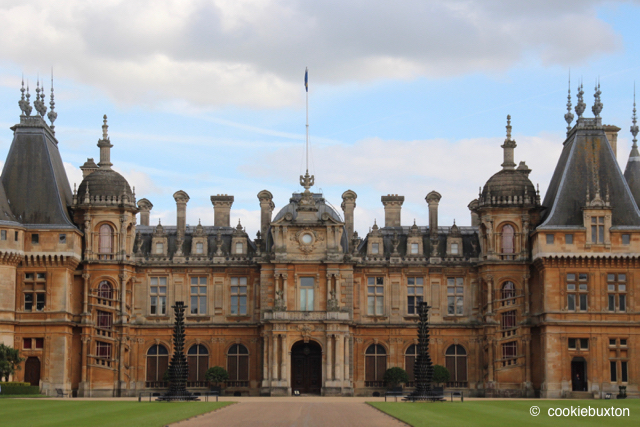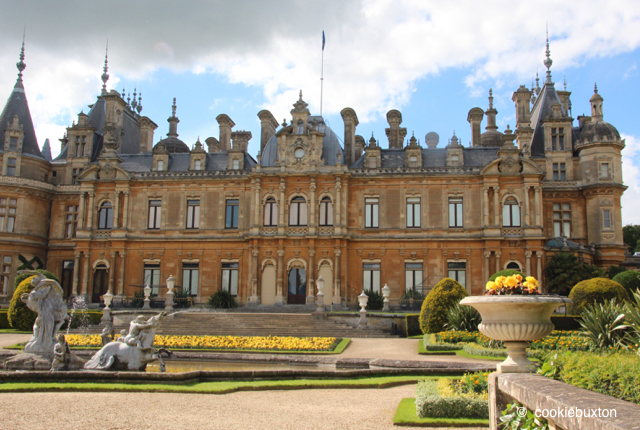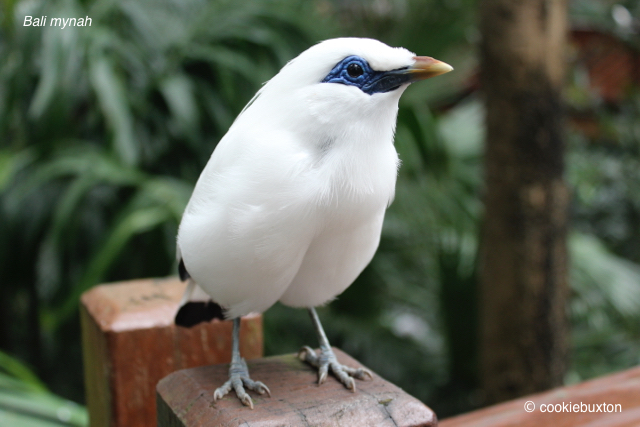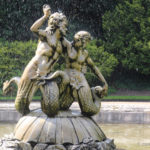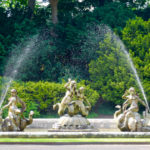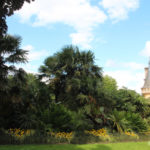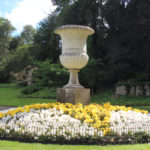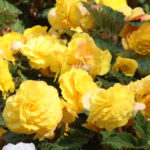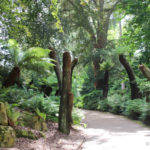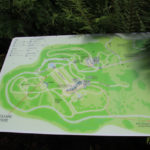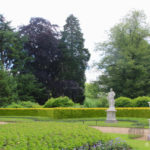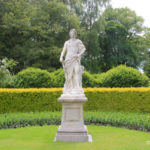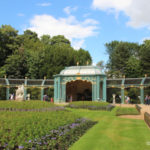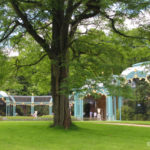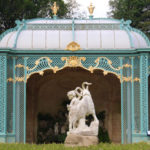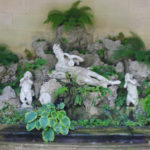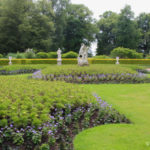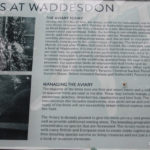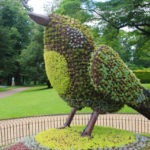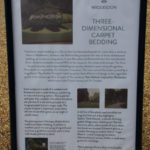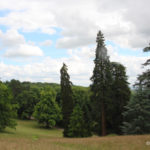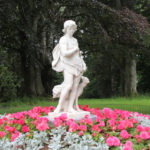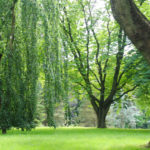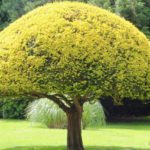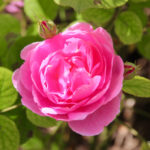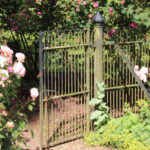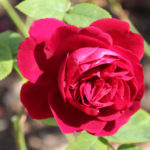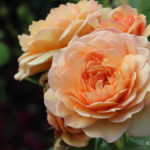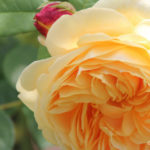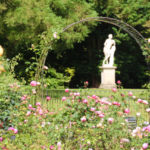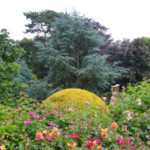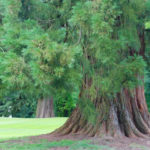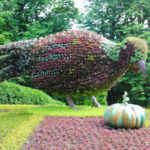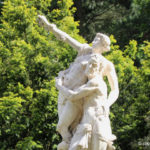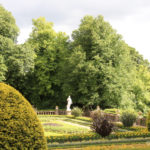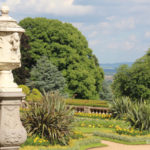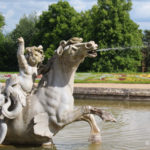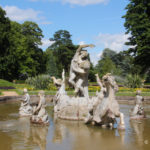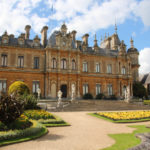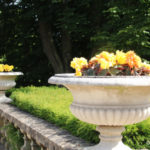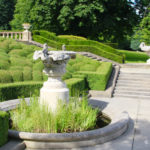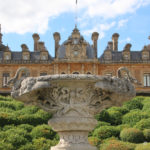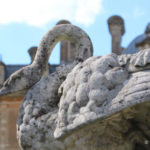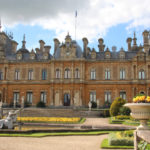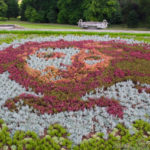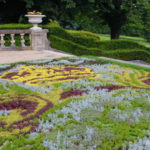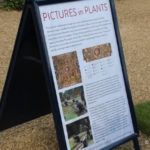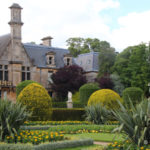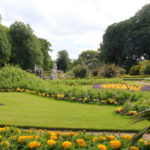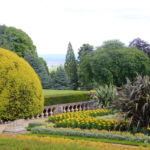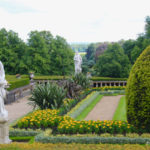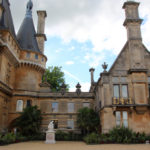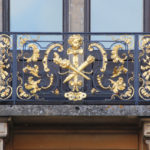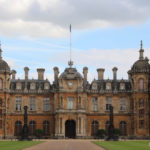Waddesdon Garden, England
Waddesdon Gardens, the Rothschild’s Legacy at Buckinghamshire
Waddesdon Gardens, along with the Rothschild’s manor, viewed from the top of North Avenue and looking towards the 19th century country retreat, create an impressive scene. The scene must have looked equally impressive, and unusual, 140 years ago, when the French châteaux was erected in the 1880s by Baron Ferdinand de Rothschild in the middle of English farm fields.
When Baron de Rothschild (1839-1898) bought the Waddesdon farm property in 1874, he invited French architect Gabriel-Hippolyte Destailleur to design a country retreat in the style of a Loire valley châteaux where he could entertain his guests. The manor was constructed in stages, with the foundation stone laid in 1877, the bachelors’ wing built three years later, and the main part of the house completed in 1883. In 1890, Baron de Rothschild added a morning room along with two more bedroom suites to complete his project.
Upon the Baron’s death in 1898, Miss Alice de Rothschild (1847-1922), inherited Waddesdon from her brother. In addition to her passion for maintaining the family’s collections housed at Waddesdon, she was an enthusiastic gardener, and spent her energy enhancing the Waddesdon garden scheme and introducing, among other features, the renowned three-dimensional garden beds in the shape of birds – a gardening tradition that is still seen at Waddesdon to the present day.
The estate passed next to Alice’s great-nephew in France, James de Rothschild (1878-1957). James, along with his English wife, Dorothy (1895-1988), added in such features as a golf course and the Waddesdon Stud. During the Second World War, the Rothschilds moved out of the main house and into the bachelors’ wing to accommodate children being evacuated from London.
Waddesdon Bequeathed to the National Trust
When the war ended, James and Dorothy made plans to bequeath part of the property and many of their important collections to The National Trust. To support this gift, the family established what became the largest endowment in the history of the Trust, and James named his wife Dorothy as the chairwoman of the management committee. Dorothy de Rothschild oversaw the transformation of Waddesdon and its opening to the public in 1959 and she managed Waddesdon’s operations for the next three decades. In 1984, she also led the 100-year anniversary restoration of the manor.
A truly gorgeous National Trust property, Waddesdon encompasses woods and parklands, historic garden beds, handsome terraced gardens, and the beautiful manor. The estate is a wonderful legacy and tremendous asset for future generations to enjoy. The adjoining Rothschild property, originally an estate of 2,700 acres, by 2011 encompassed 6,000 acres. The woodlands are managed under a 10-year forestry commission plan that saw creation beginning in 2012 of a 60-acre Diamond Jubilee Wood with ponds and parklands open to the public.
Waddesdon Aviary
In touring the Waddesdon Gardens, I made my way down the long North Avenue and beyond to the walkways. It was a delight to turn the corner on the pathway and come upon the Rothschilds’ Aviary, with its lovely, large, decorative bird enclosures, painted in a smokey teal blue and gold, stretching out ahead. In the past, the enclosures housed the family’s private bird collection, which was much beloved by Alice de Rothschild. Today, Waddesdon not only features its Aviary as a key attraction for visitors, but the Aviary also plays a vital part in a world-wide bird breeding program that is helping to save critically endangered birds.
Bali myna (Leucopsar rothschildi)
In 2011, Waddesdon donated four female Bali myna (Leucopsar rothschildi), also known as Rothschild’s mynah (and a.k.a. Bali starling and jalak Bali), to broaden the Bali myna gene pool and to help protect the species from extinction. The wild bird population, which had dropped to 15 birds over a century ago, had fallen again in 2001 to only six birds in the wild. After much effort by dedicated conservationists, the wild bird population is now estimated at over a hundred birds worldwide. At Waddesdon, over a third of the bird species housed at the Aviary are threatened with extinction. The Waddesdon program is doing its part to help these species recover.
Restoration Efforts at Waddesdon
Major restoration work on the Waddesdon manor was undertaken between 1990 and 1994, and included conversion of the coach house and stables into an art gallery to display Rothschild collections. During the early 1990s, attention was also paid to restoring the gardens. Restored in 1994 to a design by Beth Rothschild, the Parterre showcases Waddesdon’s beautiful formal garden beds. Waddesdon’s annual beds encircle the Waddesdon Aviary and radiate out from the manor, laid out in various schemes on the lawns and the terraces wrapping around the property The gorgeous display of annuals is planted with new designs twice each year, utilizing about 110,000 plants. Waddesdon’s Victorian garden and its outstanding Parterre won the Europa Nostra award in 2000.
A decade after the Parterre was restored, the Aviary and its adjacent gardens underwent major restoration, in 2003 to 2005. Another recent enhancement to the grounds was the creation by Lord Rothschild and his daughter Beth Rothschild of the Millenium Avenue of trees linking Waddesdon with Upper Winchendon.
In comparison to the 60 or so gardeners hired to maintain the Waddesdon gardens in the late Victorian era, the number of gardeners on staff in the present day is around 15, supported by a team of over 300 dedicated volunteers.
Waddesdon’s larger-than-life 3D annual beds in the shape of birds are among the many attractions to the gardens. The figures are shaped using a framework of welded mesh with an internal watering system and a peat-free compost soil. The plantings on the ground around the 3D figures are placed into traditional carpet beds in various patterns and layers.
In contrast, the larger picture beds on the Parterre are made using “carpet tiles” that are planted using image mapping. The carpet tiles are designed to replicate sections of the overall picture and placed much like pieces of a puzzle, planted into the correct place to instantly create the image. Each season, different images are chosen to represent some aspect of design within the Waddesdon manor.
A favourite attraction at Waddesdon is the attractive rose garden, established on the property in 2004 and dedicated as a tribute to Miss Alice de Rothschild. It offers a lovely place to rest and relax while visiting the Waddesdon National Trust property.
Waddesdon Website
Waddesdon.org.uk
Video of Waddesdon Aviary
https://youtube.com/watch?v=prsXzDCRh-w%3Ffeature%3Doembed
Video of Waddesdon Gardens
Text and Images: Copyright Nadine Kampen / cookiebuxton
Photograph location*: Waddesdon Manor, Aylesbury, England HP180JH (July 2016)
*Photograph of Bali myna taken by Nadine Kampen at Hong Kong Park (December 2014)
Map: Courtesy of Google Maps
Cookie Buxton Photograph Gallery
Waddesdon Garden
Click on any image to enlarge for viewing. Click again on the image to advance the series in large format.
